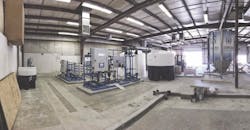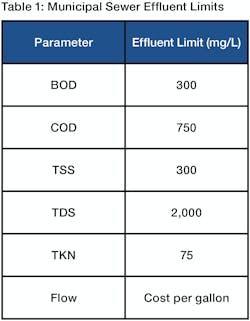About the author:
Greg Westbrook is CEO for ClearCove Systems. Westbrook can be reached at [email protected].
The challenge is not new, nor is it unique for an expanding business: grow the manufacturing space and grow the amount of product out the door without growing your cost structure so it overwhelms the first two objectives.
In today’s world, sustainability has become a key element of the cost structure equation, particularly in the food and beverage industry. While resource preservation and protection are prime positive outcomes, more and more firms are finding that well-thought-out sustainable practices are shrinking their basic cost structures to places they could not have imagined just a few years ago.
Take the world’s most basic natural resource, water, for example. An expanding population base and a continued need to feed that expansion are putting unprecedented stress on fresh water supplies. Those businesses that are able to recycle and reuse their fresh water now have a distinct competitive advantage over those who cannot—or will not.
For an established Midwest dairy producer with decades of experience in manufacturing mixes for ice cream, soft serve and frozen yogurt producers, buying a pre-built enclosed complex triple the size of its former facility that would triple output was a huge step. The new facility would be geographically closer to several prime customers, reducing logistical product movement costs.
Growing pains
Avoiding over-the-top municipal sewer surcharge costs while simultaneously working towards manufacturing process energy consumption savings was the challenge the producer faced.
Located about an hour from the center of a large metroplex and starting with a clean slate in designing its facility, the employee-owned dairy products firm wanted to keep it simple, and sustainable. Blended into that equation were the challenges of moving to an existing facility that was being retrofitted and the need for a system that would fit the limitations of the building footprint. The client also had a need to treat high-strength and low-strength waste streams in an economical and efficient manner. Lastly, consideration to further expand treatment as the business grew was critical.
Surcharge Snag
In its new community, flow discharged into the municipal sewer system is charged per thousand gallons, with limits and surcharges structured as seen in Table 1.
In other words, the dairy products manufacturer would be looking at a hefty surcharge because production wastewater discharge appeared to be well over the 300 mg/L limit. That surcharge would be compounded by an additional charge based on thousands of gallons of flow of discharge.
Upstate New York-based ClearCove offered the dairy products manufacturer a solution for sanitary compliance and surcharge elimination with a minimal footprint. The company installed its patented biology-free ClearCapture P1400 primary treatment system, integrated with a physical ultrafiltration (UF) membrane combined with a reverse osmosis (RO) system and RO concentrator solution.
In this instance, the primary treatment will treat up to 30,000 gal per day (gpd) of dairy manufacturing process wastewater, which can be scaled upward to 60,000 gpd of wastewater within a 100-sq-ft area. The entire solution, with physical membrane secondary treatment, takes up less than 2,000 sq ft and is managed from a central control point. At the firm’s request, a second-pass RO system was installed to drive the effluent to even cleaner standards, offering the producer a wider range of water reuse options.
With the combined primary and secondary treatment of the system at $0.057 kWh, energy costs for the pretreatment system treating 30,000 gpd came out to $3,000 per year.
The system also utilizes pretreatment equalization and a pH adjustment system, using a small amount of coagulant and no cationic polymers, at the front end of the system to enhance flocculation and settling in the tank. The total cost per year of the optimized coagulant and the cleaning chemical for the client is $10,000 per year for the same volume of 30,000 gpd.
All of the above combines to achieve the effluent performance shown in Table 2.
Sensible Solids
The solids collected at the back end of the process offer the client another cost savings option as well. The material is excellent feedstock for anaerobic digesters due to high levels of digestibility and methane potential. To assist the customer, seven anaerobic digesters within 50 miles of the new plant have been identified and are being approached with the potential to further reduce disposal costs.
As this dairy producer’s manufacturing space expanded, the amount of product going out the door also expanded. As for the common cost structure increases, expansion was not on the books.


